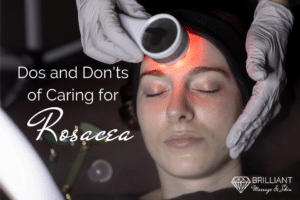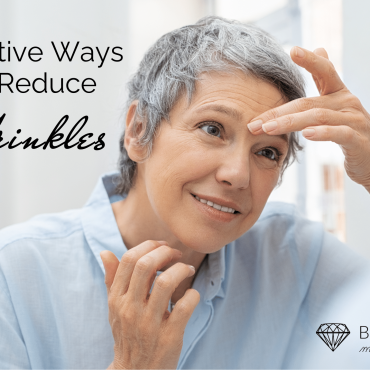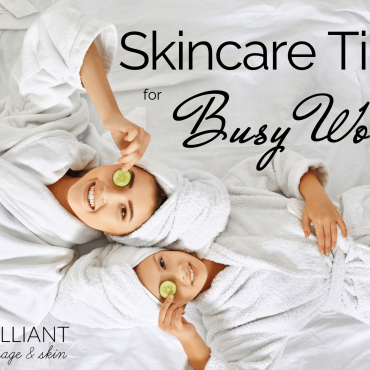The Dos and Don’ts of Caring for Rosacea


How Do You Know That You Have Rosacea?
Rosacea is a condition that’s always best diagnosed by a physician. The most common symptom you’ll get to begin with is flushing, where your skin turns red for a short time. This doesn’t always mean you have rosacea, but it’s often the first sign that it’s developing.
Following Flushing Episodes, You Could Experience:
- A burning or stinging sensation
- Redness to the skin that doesn’t go away spots
- Noticeable blood vessels becoming visible in the skin.
Ask for medical advice if you think you might be getting any of these symptoms.
Managing Your Rosacea
There’s no cure for the condition, but there are certainly ways to keep the symptoms under control. Your esthetician might be able to give you some professional advice if you decide to go along the road of salon treatments; you might want to give laser and intense pulsed light (IPL) treatment a try. These types of treatment can be very effective; sessions involve having beams of light aimed at visible blood vessels in the skin to shrink them. Although this doesn’t cure the underlying condition, it can help reduce the visible signs, which can be upsetting.
You might find that keeping a record of the things that trigger your rosacea helps you manage flare-ups. Alcohol and caffeine are well-known triggers for many people. Other culprits also include strong sunlight, cold weather, spicy foods, and stress.
Caring for Your Skin with Rosacea
Skin with rosacea needs gentle but persistent care. Getting into a routine will help you manage the condition, and using the right products will help you avoid flare-ups or deterioration.
Make sure that you use a gentle cleanser every morning and evening. A soap-free cleanser with a neutral pH is best – steer clear of scented products and alcohol-based cleansers and toners.
If you use a water-based cleanser, rinse with lukewarm water (not hot) and wait for your skin to dry completely before you put on any makeup.
Use skincare products that are specifically for sensitive skin. Mild, hypoallergenic, and non-comedogenic (pore blocking) products will help boost your skin health and won’t dry it out or irritate it.
Try not to use oil-based or waterproof makeup that uses solvent makeup remover. These products and their removers can irritate your skin. Opt for water-based cosmetics that are kinder to your skin and easier to remove.
Don’t use harsh toners or astringents. Also, avoid products that contain fragrances, alcohol, menthol, witch hazel, eucalyptus oil, camphor, clove oil, peppermint, sodium lauryl sulfate, or lanolin.
There are some therapeutic facial products and treatments to help treat the symptoms of rosacea. Your esthetician will be happy to give you professional advice about products and treatments that will help you – so don’t be afraid to ask!
Call or book for facial and more esthetician advice for products and care of your rosacea.
Brilliant Massage & Skin
Burlington, Vermont


